
The Breed History
In the 16th century, early breed records first appeared in the British
Isles. It is possible that the Irish Wolfhound was the main source of
the genes of the Deerhound breed, and that they were crossed with
Greyhounds to produce a finer body type. Deerhounds were highly
esteemed at certain points in history such that only the aristocracy
and Clan Chieftains could keep them. By severely limiting
ownership, breed numbers dwindled to the brink of extinction and
inbreeding further weakened the Scottish Deerhound, but later
fanciers rejuvenated the bloodlines and though still a rare breed,
they are once again thriving. AKC recognition occurred in 1886.
Breeding for Function
Bred for coursing or hunting deer alone or in pairs, this breed excels
at scent tracking. In North America they were also used for hunting
coyotes and wolves. They were also bred to be companions.
Physical Characteristics
Height at Withers: female 28" (71 cm) minimum, male 30-32"
(76-81 cm).
Weight: females 75-95lb (34-43 kg), males 85-110 lb (38.5-50 kg).
Coat: The most common color is the dark gray-blue coat, but other
shades of grays, brindles, faun and sandy red are accepted. White
is not accepted, but the presence of a small white toe mark and
white chest are tolerated. The haircoat consists of shaggy, crisp,
hard hairs, though the haircoat has a softer texture on the ears and
ventral abdomen. Averages about 4" (10 cm) in length.
Longevity: 8-11 years
Points of Conformation: The general conformation is similar to
a very large Greyhound, with a wiry coat. They are smaller than
Irish Wolfhounds and more refined in bone and in the head. The
head gradually tapers through its length to a tapered muzzle, the
skull is flat, and the nose black (though in blue fawn coated dogs,
it may be blue). A black muzzle is preferred, ears are also black or
dark in color, and prominent brows, with moderate whiskers and
beard are present. The medium-sized ears are soft and folded, and
high set. Eyes are dark brown or hazel in color, with black palpebral
margins. The neck is long and well muscled. The thorax is deep and
fairly narrow, and the abdomen is well tucked up. The limbs are long
and straight boned with a lithe build, and feet are compact with
well-arched toes, with little hair. The topline is arched through the
loin, and drops off to the tail, which is long and tapering, reaching
about 1/2 way down the metatarsals, and is gently curved. The gait
is strong, long and low and appears effortless.
Recognized Behavior Issues and Traits
Reported breed characteristics include: A very alert attitude,
requires close human companionship, loyal and possessing high
trainability; quiet in the home, and exhibit low energy unless
outside on the run. It is best to start obedience training early;
tend to be a "one-man" or one family dog. Scottish Deerhounds
are sensitive and generally good with other dogs. Overall, they are
good-natured and therefore not suitable as a watchdog. Because of
the strong chase instinct, it is important that they are off leash in
a fenced enclosure only. Deerhounds may exhibit chase reflex with
small pets. They will show courageous response when necessary.
They have low grooming needs except for the twice annual
undercoat stripping. They have a low shedding tendency.
Normal Physiologic Variations
Sight hounds have lower normal ranges for T4 and T3
concentrations compared to other breeds.
Echocardiographic and Electrocardiographic Values: The
Deerhounds have relatively large hearts. Left ventricular
echocardiographic measurements were similar to those obtained
from Irish Wolfhounds. Normal end systolic volume index (ESVI) in
the Deerhound was relatively high. It is concluded that an index
greater than 70 ml/m2 body surface area could be considered
as abnormal. It is suggested that, due to the greater heart size/
body weight ratio, as compared with other breeds of dogs, ECG
analysis of Deerhounds produces a greater R-wave amplitude
and a prolonged QRS duration than would be regarded normal
in common large-breed dogs. In healthy Deerhounds, the mean
R-wave amplitude was 3.8 +/- 1.5 mV for lead 2 and the mean QRS
duration was 0.061 +/- 0.012 s.
In a UK study, 28.1% of litters were born via Cesarean section.
Drug Sensitivities
Anesthesia: Sight hounds require particular attention during
anesthesia. Their lean body conformation with high surface-area-
to-volume ratio predisposes them to hypothermia during
anesthesia. Impaired biotransformation of drugs by the liver
results in prolonged recovery from barbiturate and thiobarbiturate
intravenous anesthetics. Propofol, and ketamine/diazepam
combination are recommended induction agents.
Inherited Disease
Factor VII Deficiency: Autosomal recessive disorder causing
mild bleeding. Affected dogs may exhibit an increased bleeding
tendency following trauma or surgery or rarely appear to develop
spontaneous bleeding. Carriers are detected worldwide. A genetic
test is available.
Hip Dysplasia: Polygenically inherited trait causing degenerative
hip joint disease and arthritis. Too few Scottish Deerhounds have
been screened by OFA to determine an accurate incidence.
Elbow Dysplasia: Polygenically inherited trait causing elbow
arthritis. Too few Scottish Deerhounds have been screened by OFA
to determine an accurate incidence.
Patella Luxation: Polygenically inherited laxity of patellar
ligaments, causing luxation, lameness, and later degenerative joint
disease. Treat surgically if causing clinical signs. Too few Scottish
Deerhounds have been screened by OFA to determine an accurate
frequency.
Disease Predispositions
Anal Gland Infection: A problem of young hounds, with an
average age of onset of just over 2 years old. Males are affected
about twice as often as bitches. Reported at a frequency of 11% in
the 2000 SDCA Health Survey.
Osteosarcoma: Malignant bone cancer, usually involving the long
bones of the extremities. The average age of onset is 8 yrs of age.
There is a female preponderance in the breed. Research estimate
of 15% affected frequency. Heritability of 0.67. Appears to be
influenced by a major autosomal dominant gene on chromosome
34. Reported at a frequency of 5% in the 2000 SDCA Health
Survey.
Gastric Dilation/Volvulus (GDV, Bloat): Polygenically inherited,
life-threatening twisting of the stomach within the abdomen.
Requires immediate veterinary attention. Reported at a frequency
of 10% in the 2000 SDCA Health Survey.
Inhalant Allergies (Atopy): Presents with pruritis and
pyotraumatic dermatitis (hot spots). Reported at a frequency of 6%
in the 2000 SDCA Health Survey.
Dilated Cardiomyopathy (DCM)/Atrial Fibrillation: A high
percentage of affected dogs initially present with atrial fibrillation,
and progress to biventricular dilated cardiomyopathy. Clinical signs
include sudden death, passing out, exercise intolerance, pulmonary
edema, or ascites. Average age of onset of heart failure is 6-1/2
years of age. Not all dogs with atrial fibrillation will develop DCM,
but these dogs should be carefully followed for the development of
DCM and perhaps should be held out of breeding programs. DCM
occurs in male Scottish Deerhounds 4x the frequency in females.
DCM is reported at a frequency of 5-8%, heart failure at 5% and
arrhythmia at 4% in the 2000 SDCA Health Survey. The mode of
inheritance is not determined.
Hypothyroidism: Inherited autoimmune thyroiditis. 4.5% positive
for thyroid autoantibodies based on testing at Michigan State
University. (Ave. for all breeds is 7.5%). Reported at a frequency of
4% in the 2000 SDCA Health Survey.
Portosystemic Shunt (PSS, Liver Shunt): Abnormal blood vessels
connecting the systemic and portal blood flow can be intrahepatic
or extrahepatic. Causes stunting, abnormal behavior, and possible
seizures. Diagnosis with paired fasted and feeding serum bile acid
and/or ammonium levels, and abdominal ultrasound. Treatment of
PSS includes partial ligation and/or medical and dietary control of
symptoms. Unknown mode of inheritance.
Cervical Vertebral Arthrosis (Deerhound Neck): Unilateral or
bilateral arthrosis of the cervical facet joints between C2 and
C3 was detected in nine Scottish Deerhounds, causing severe
pain during lateral flexion. Lesions were evident radiographically.
Myelography did not reveal abnormalities of the spinal cord
or canal. Long-lasting relief was gained through intra-articular
administration of corticosteroids.
Cystinuria: Cystine bladder stones form in affected dogs at 3-4
years of age. Only occurs in male dogs. Caused by a defect in
cytine metabolism. Nitroprusside test is unreliable to diagnose the
disorder. Some dogs with stones will test negative. Unknown mode
of inheritance.
Ocular Disorders: The frequency of inherited ocular disorders in the
breed cannot be determined because too few Scottish Deerhounds
have undergone a CERF examination.
Cataracts, and Exocrine Pancreatic Insufficiency are reported.
Isolated Case Studies
Osteochondrodysplasia: The disorder was identified in 5 related
Scottish Deerhound pups from 2 litters. At approximately 4 or 5
weeks, exercise intolerance and retarded growth were observed.
Kyphosis, limb deformities, and joint laxity gradually developed.
Radiograph findings included short long bones and vertebrae,
and irregular and delayed epiphyseal ossification. In skeletally
mature dogs, osteopenia and severe deformities were seen. A single
autosomal recessive mode of inheritance was suspected.
Congenital Hypothyroidism: Two Scottish Deerhound full-siblings
had clinical and pathological features of congenital non-goitrous
hypothyroidism. The puppies were smaller, had shorter limbs and
shorter, broader heads than their littermates. They also had histories
of weakness, difficulty in walking and somnolence. Radiographically,
epiphyseal growth centers were absent. Both had depressed serum
thyroxine (T4) levels and one did not respond to exogenous thyroid
stimulating hormone.
Orthostatic Tremor: A four-year-old male Scottish deerhound was
presented with a two-year history of pelvic limb tremors, which
progressed to the thoracic limbs. Primary OT was diagnosed from
the clinical signs, typical electrophysiological findings and the
absence of other identifiable disease.
Genetic Tests
Tests of Genotype: Direct genetic test for Factor VII deficiency is
available from PennGen and VetGen.
Tests of Phenotype: CHIC Certification: Required testing
includes a congenital cardiac evaluation by a cardiologist with
echocardiography, and direct test for Factor VII deficiency. Optional
recommended test is serum bile acid test at Texas A&M. (See CHIC
website; www.caninehealthinfo.org).
Recommend hip and elbow radiographs, CERF eye examination,
patella evaluation, and thyroid profile including autoantibodies.
Miscellaneous
- Breed name synonyms: Royal Dog of Scotland, Rough
Greyhound, Highland Deerhound (all historical), Deerhound,
Scotch Greyhound.
- Registries: AKC, UKC, CKC, KCGB (Kennel Club of Great Britain),
ANKC (Australian National Kennel Club), NKC (National Kennel Club).
- AKC rank (year 2008): 133 (153 dogs registered)
- Internet resources: Scottish Deerhound Club of America:
www.deerhound.org
The Deerhound Club (UK): www.deerhound.co.uk
Photo Gallery of Breed - Scottish Deerhound - Dog Breed
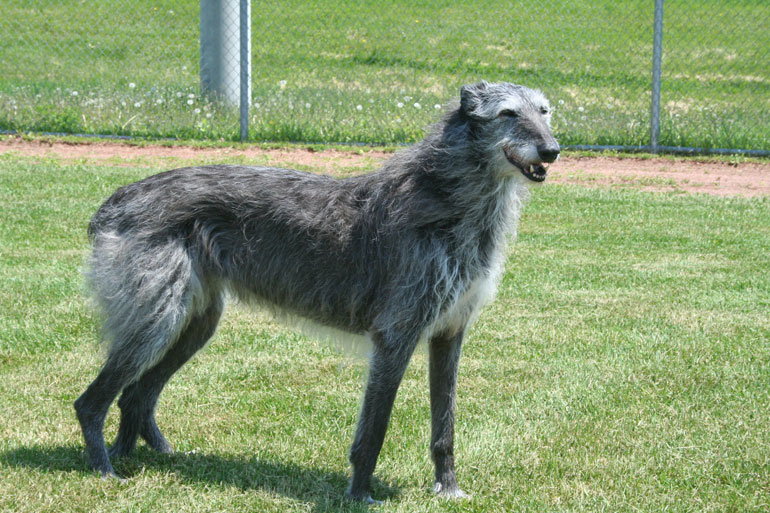

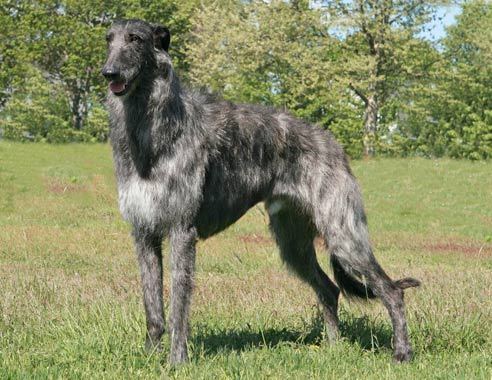
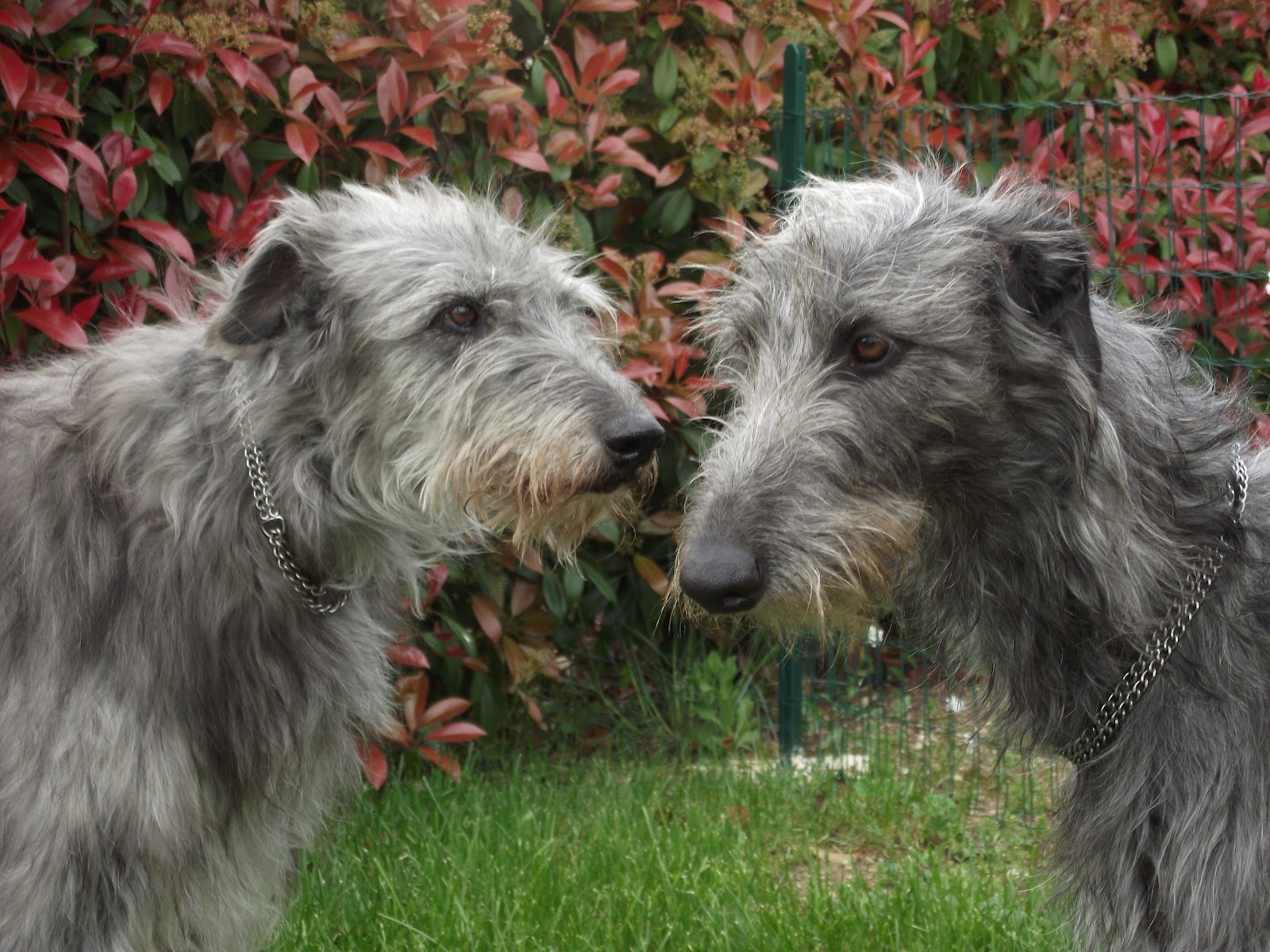
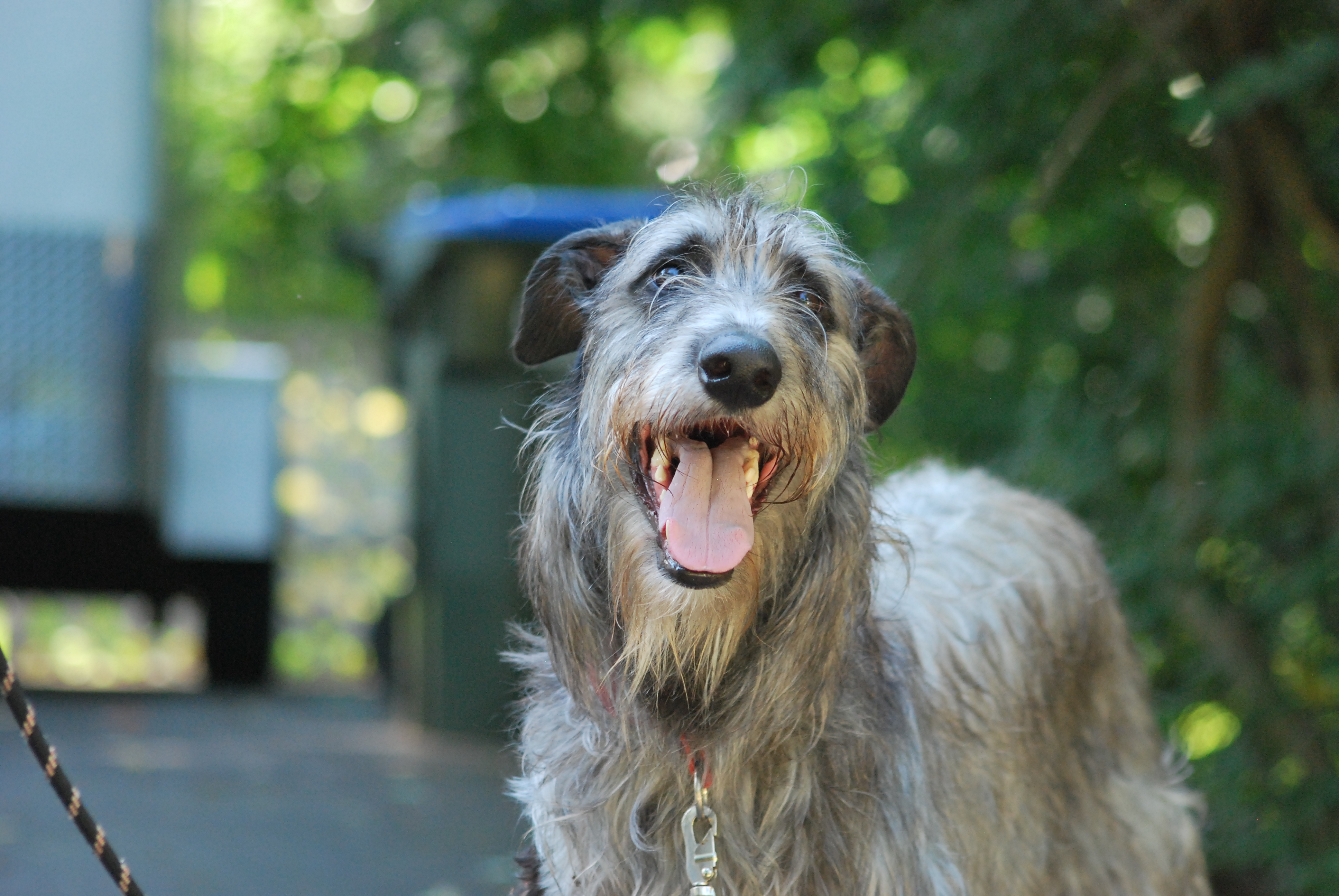
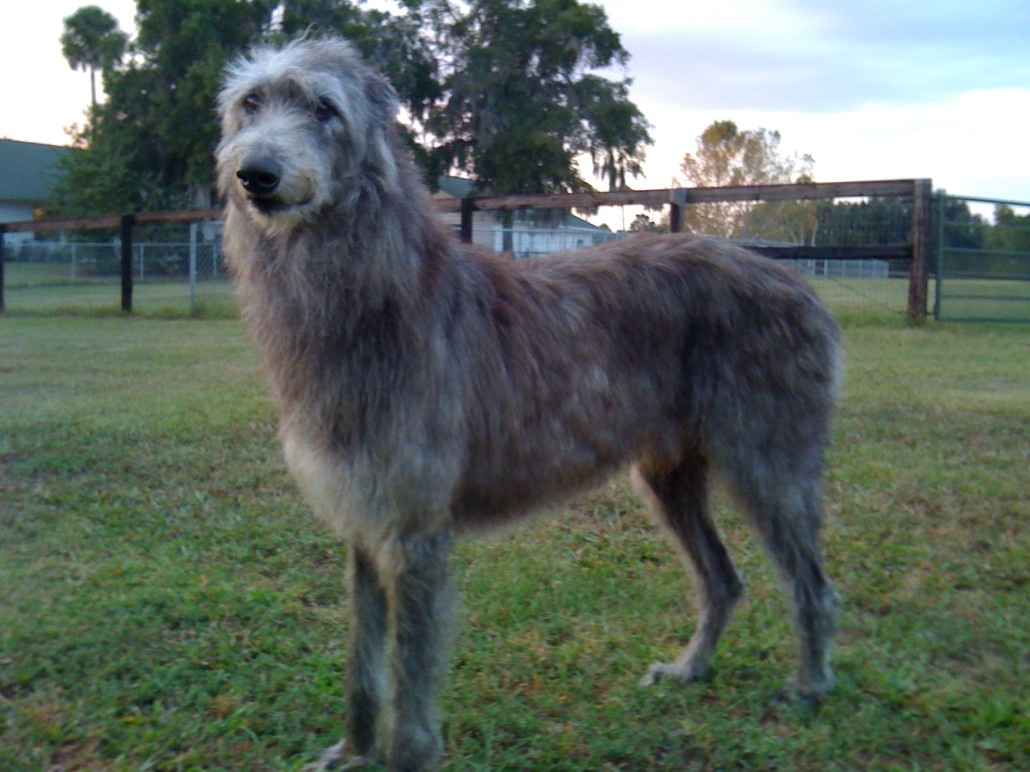


 Animalia Life
Animalia Life